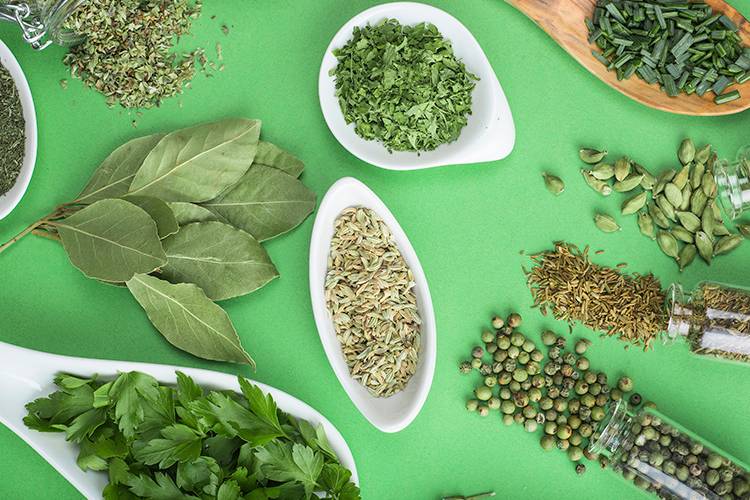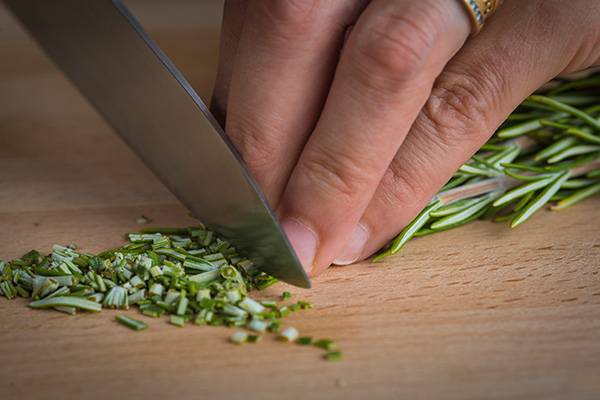The essential aromatic herbs in the kitchen
Cilantro, basil, parsley, mint, rosemary... Aromatic herbs enhance the flavour, make dishes different and add colour. Adding any of these herbs (whether fresh or dry) to stews and recipes will improve the result.
TRIED AND TESTED
Share

They can be used to add aroma and season stews and dishes, but are also the perfect substitute for salt, for which reason they are recommended in the diet for people suffering from high blood pressure. Sometimes we use them simply to add a bit of colour, or to turn an insipid recipe into a merry-go-round of colours. In addition to enhancing the flavor and smell, they provide nutritious and therapeutic properties to dishes since they contain a large proportion of mineral salts and vitamins.
Dry aromatic herbs have been available in all kitchens for quite some time, but more recently many homes also have the fresh versions. We might have a number of small pots in the kitchen, near to a window where the can get some sun for at least a couple of hours a day, a great help while we are cooking. They do not require a great deal of space or special care, as they are largely decorative. Some of them also keep mosquitos away and are sold in supermarkets for that reason. We can also dry them ourselves by making bouquets, or a simpler option is to buy dried aromatic herbs to have to hand whenever we need them. This would be the case with all those herbs that we use less often.
There are many different types of aromatic plants. With some herbs both the stem and leaves are used, such as parsley or rosemary, while with others it is only the leaves, such as bay leaves. Which are the most common when it comes to cooking?
• Basil: Seasoning used in Italian dishes such as pasta and pizzas, where it is usually used fresh. There are more than 150 different species of basil, although the one used in the kitchen is sweet basil. If it is added to a hot dish, it should be at the end of the cooking process so that it doesn't lose any aroma.
• Bay leaves: One of the most used condiments in Mediterranean cuisine. Dry laurel leaves are used to add aroma to stews, sauces and marinades. Never fry the leaves, you should instead hydrate them to extract all their aroma, from the sweet to the spicy. Laurel combines very well with other aromatic herbs such as oregano, parsley and thyme. It is advisable to keep bay leaves inside a jar, never in the fridge as it may lose some of its quality.

• Wild oregano leaves: Whether fresh or dried, are ideal for pizzas and pasta, although they are also used with vegetables, potatoes or sauces. We can find it in salty doughs such as bread, pizza or focaccia. It combines well with mozzarella cheeses, anchovies, eggs or onions. It helps digestion when made into an infusion.
• Parsley: It is probably the most used aromatic herb in our country. There are two types of parsley: flat-leaved and curly. The first one has a stronger flavour, so it is usually used in soups, sauces, vinaigrettes or fillings, while the curly variety is usually used as a decoration. It doesn't withstand high temperatures or long cooking times well.
• Dill: with a sweet, aniseed flavour, it accompanies meats and fish and creamy dishes. It blends perfectly with lemon and vinegar. This herb is widely used in Scandinavian cuisine, both for marinating salmon and in canned herring. If we are going to add it to cooked dishes, it is advisable to do so at the end of cooking so that it does not lose any aroma or flavour.
• Romero: Typical of the Mediterranean area, Rosemary is one of the most well-appreciated plants for its aroma and flavour. Rosemary gives the final touch to one of our most universal dishes: paella. Once it is dried, it maintains its properties pretty well. In Spain it is used for roast or stewed lamb or rabbit, ratatouille, marinades, pickles, rice dishes and to prepare and dry sausages or cheeses.
• Mint: Mint has a refreshing flavour that can produce a cold sensation on the palate and in the airways. It is a very easy herb to keep and cultivate, as it grows rapidly in moist, fertile soils with little exposure to sunlight. It's perfect to growin a pot in the kitchen. It is mainly used in sweets and pastries, although it is also often used in savoury dishes such as salads, to add aroma to sauces and soups, and with vegetables, game meats, lamb or legumes.
• Tomillo: Thyme is a typical Mediterranean herb that can be found wild in many hillside areas. It can be dried by tying bouquets from the stalks and hanging it upside down in a dry and airy place. Once the leaves are dry, they can be crushed and stored in an airtight container. It can be cooked for a long time, without the risk ofaltering its flavour or making the dish taste bitter. It combines with meats,poultry, sausages, potatoes, vegetables, soups, stews, etc.
Tips for cooking with fresh aromatic herbs:
•Wash and dry thoroughly before using.
• Sturdy-stalked herbs, such as rosemary or thyme, are usually added at the end of cooking, while delicate herbs such as cilantro, parsley, basil, or dill should be added shortly before serving.
• Some fresh aromatic herbs such as fennel, mint, or basil can be frozen in the right conditions, although they may lose some of their qualities. Small leaves can be frozen on an ice tray by first adding water.







